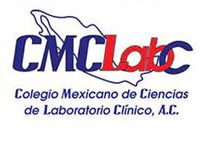Now a team of Dutch investigators has data suggesting that a protein in dengue virus that goes by the scientific name, NS4B, would make a promising target for antiviral drug development. The research is published in Antimicrobial Agents and Chemotherapy, a journal of the American Society for Microbiology.
More specifically, the team found that a metabolite of the common pain reliever, acetaminophen, called AM404, inhibits Dengue virus from replicating. They identified AM404 as a potential antiviral agent by screening the National Institutes of Health Clinical Collection, a library of small molecules that have been used clinically in humans, using a high-throughput screening system.
The team was able to determine when replication was being inhibited because they used a derivative of dengue virus that expresses luciferase, a molecule that produces bioluminescence, during replication, said corresponding author Ronald van Rij, PhD, associate professor in the Department of Medical Microbiology, Radboud University Medical Center, Nijmegen, the Netherlands. “This system provides an easy and rapid read-out of virus replication, and is therefore very useful for screening purposes,” said van Rij.
In an effort to identify mutations that would render dengue virus insensitive to AM404–thereby identifying the compound’s target, the researchers tried to generate resistance mutations by culturing the virus in the presence of AM404. “This is a typical approach to generate resistance mutations,” said van Rij. However, these attempts failed.
Next, the researchers tested three dengue virus mutants that had proven resistant to other antiviral compounds for cross-resistance to AM404. “Surprisingly, all three amino acid substitutions rendered [dengue virus] insensitive to AM404, whereas the mutants remained sensitive to ribavirin [another antiviral compound],” the researchers wrote. “These mutations are located in the viral NS4B protein, indicating that aNS4B is the direct or indirect target of AM404.
Like Zika virus, Dengue is transmitted by the mosquito, Aedes aegypti. Dengue, called break bone fever, is notable for causing severe bone and muscle pain, headache, and pain behind the eyes. It is also linked with severe vomiting, red spots or patches on the skin, difficulty breathing, and dark, tarry stools, according to the Centers for Disease Control and Prevention. It causes an estimated 100 million clinical cases worldwide, annually, and roughly half of the world’s population is at risk, including southernmost regions of the United States, such as Florida, Texas, and Hawaii, according to the World Health Organization. About 2.5 percent of those infected die, although early detection and treatment can reduce mortality to around one percent.
Unfortunately, AM404’s antiviral activity against dengue is rather modest, said van Rij. “However, insights into the mechanism behind AM404’s antiviral activity will teach us a lot about the infection.”
The American Society for Microbiology is the largest single life science society, composed of over 47,000 scientists and health professionals. ASM’s mission is to promote and advance the microbial sciences.
ASM advances the microbial sciences through conferences, publications, certifications and educational opportunities. It enhances laboratory capacity around the globe through training and resources. It provides a network for scientists in academia, industry and clinical settings. Additionally, ASM promotes a deeper understanding of the microbial sciences to diverse audiences.
Source: ASM



















































